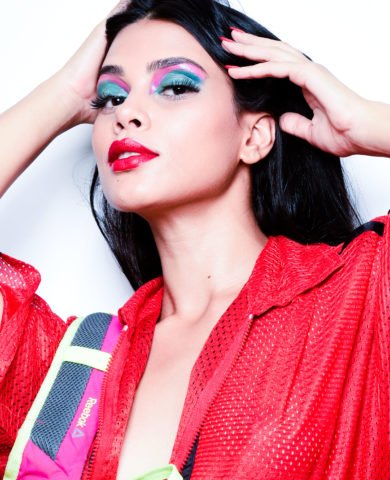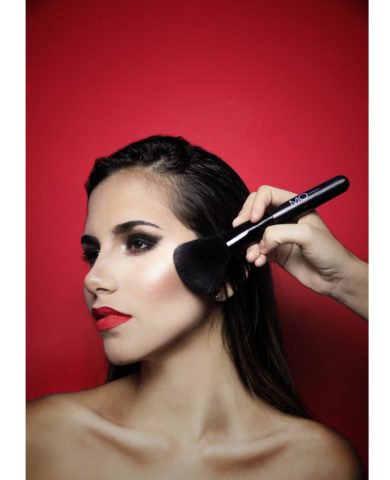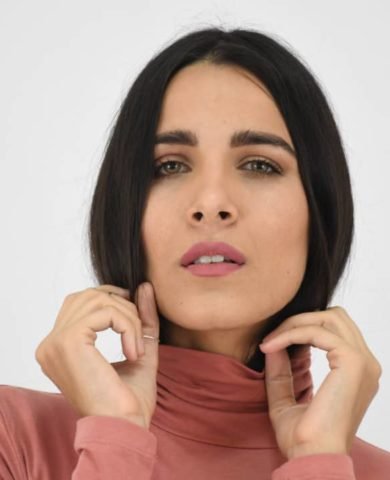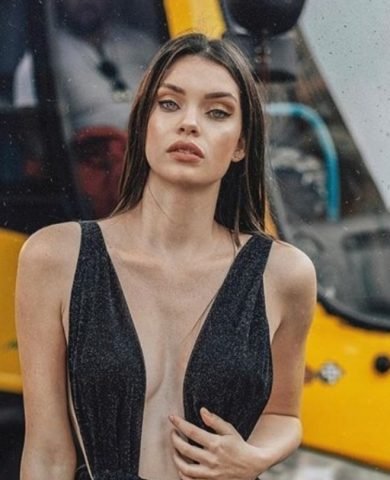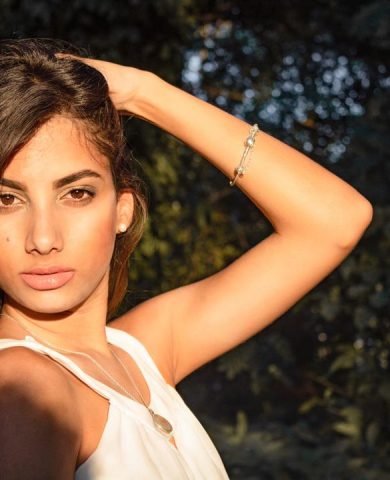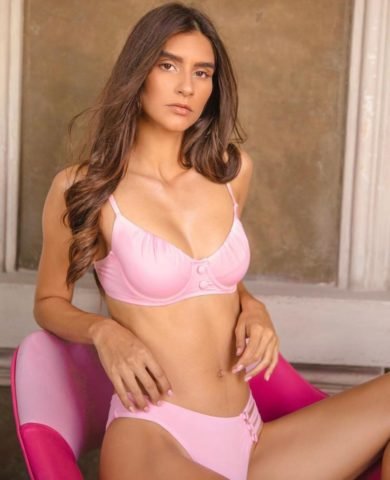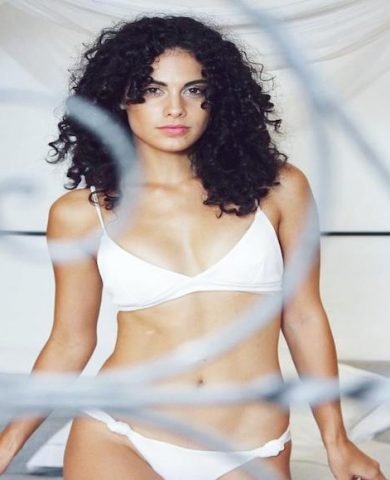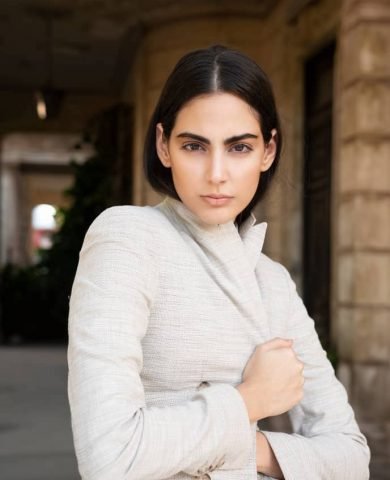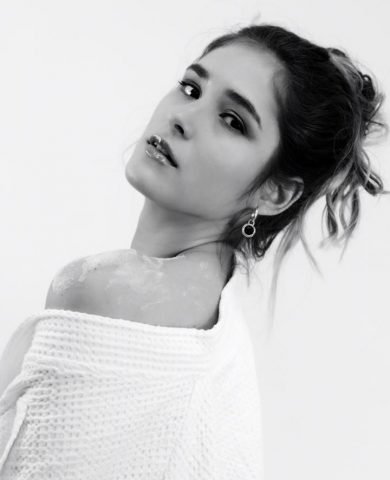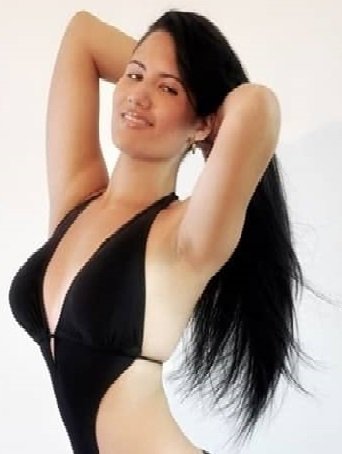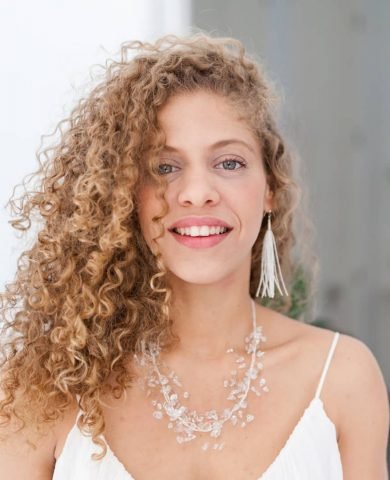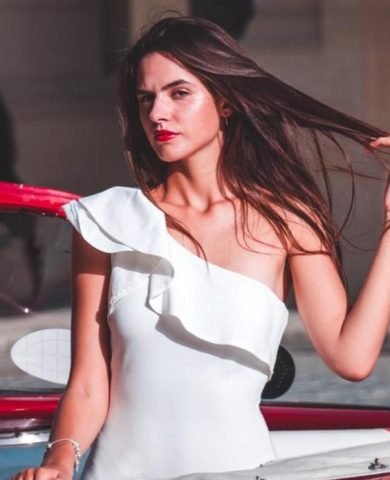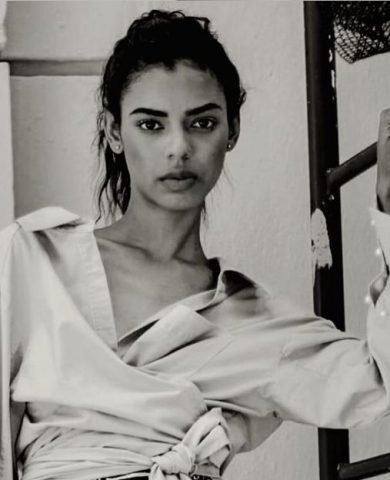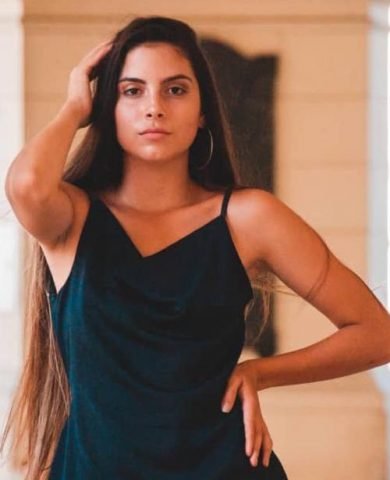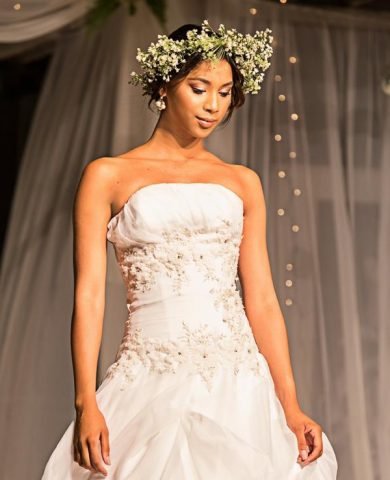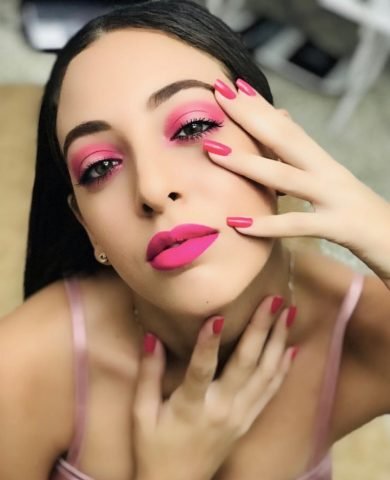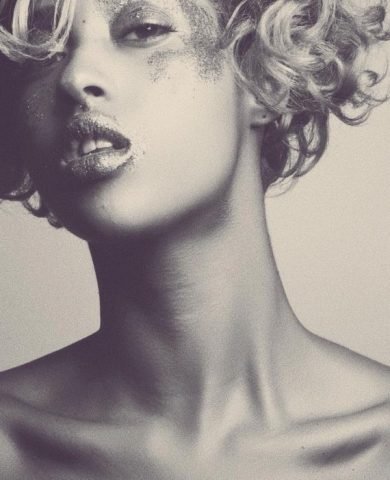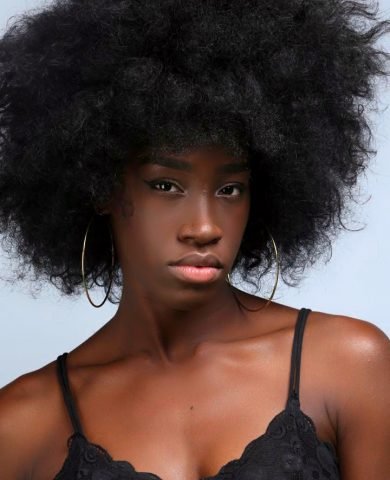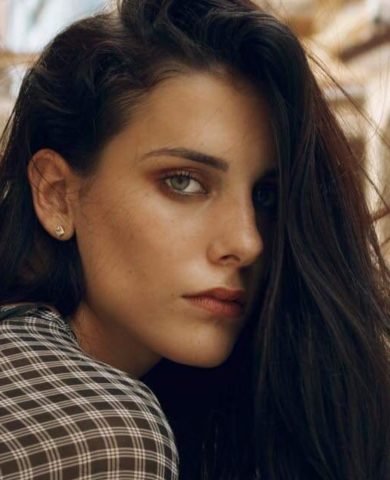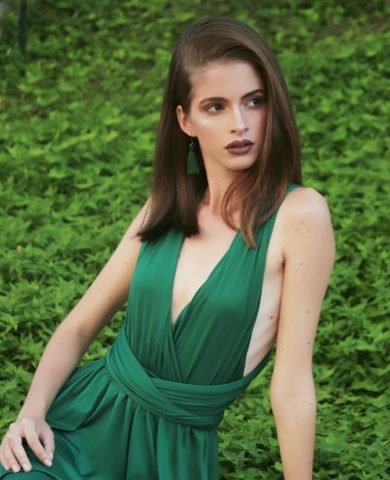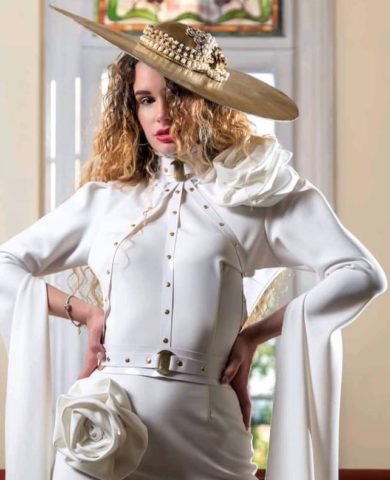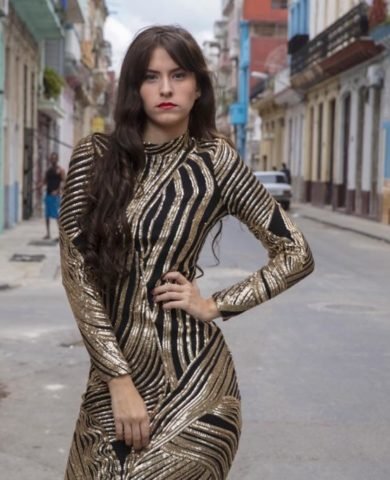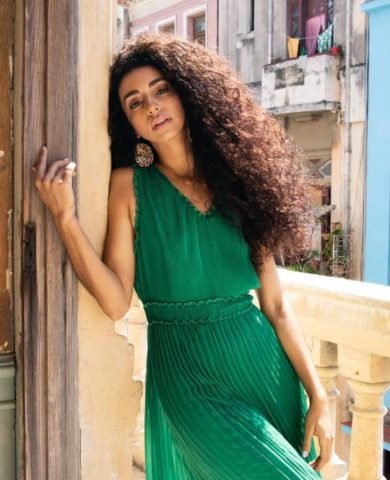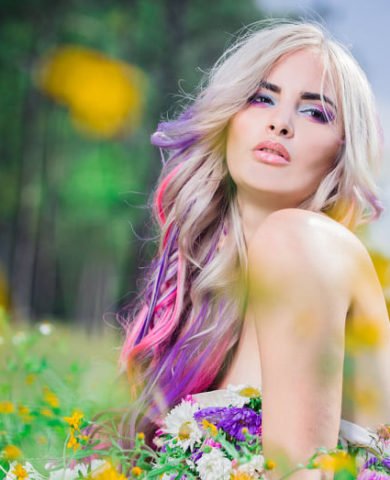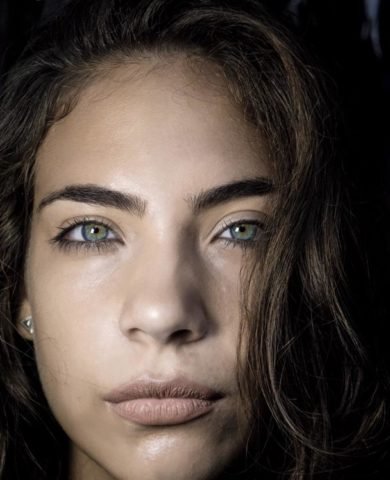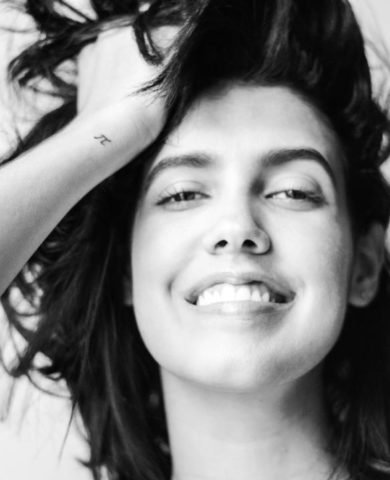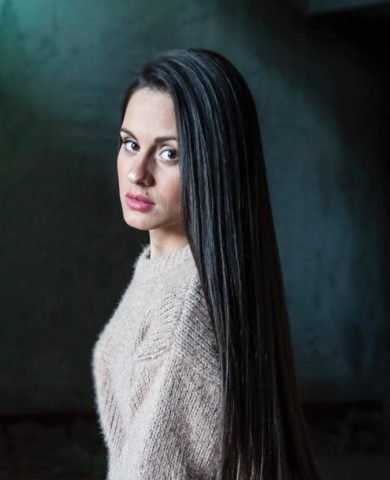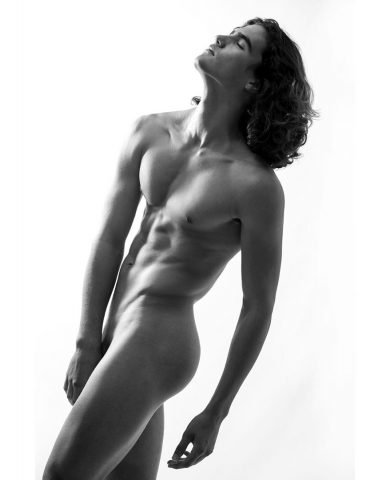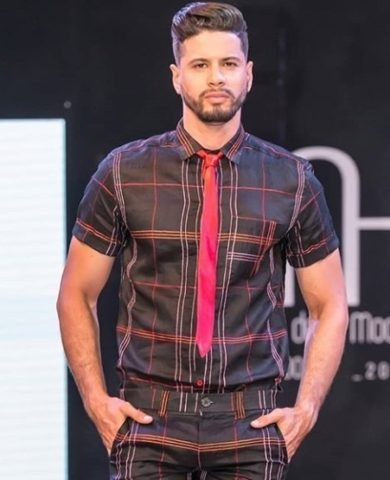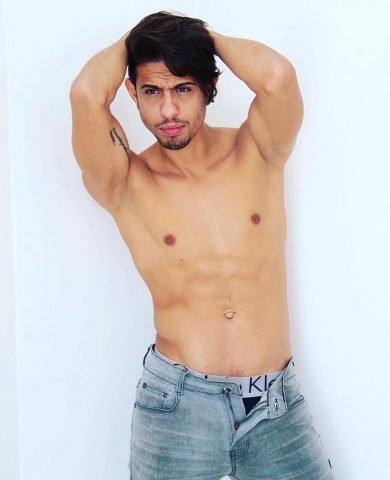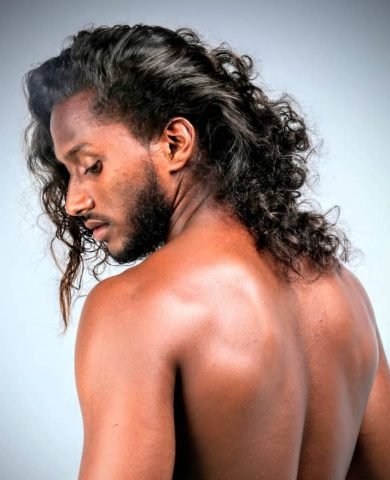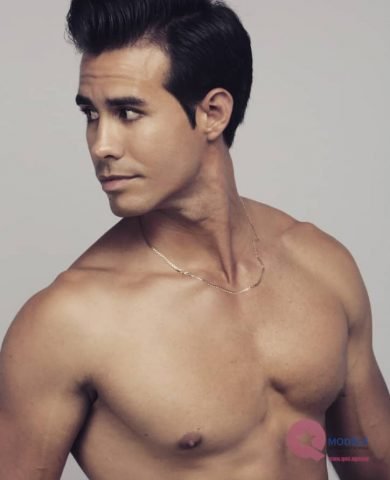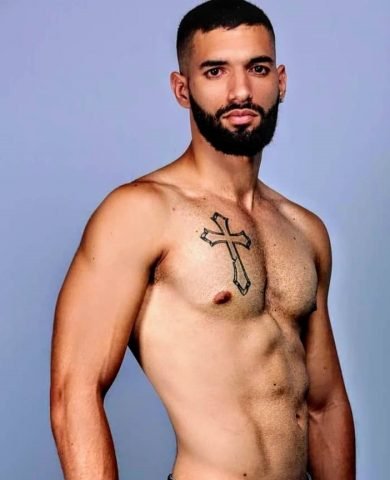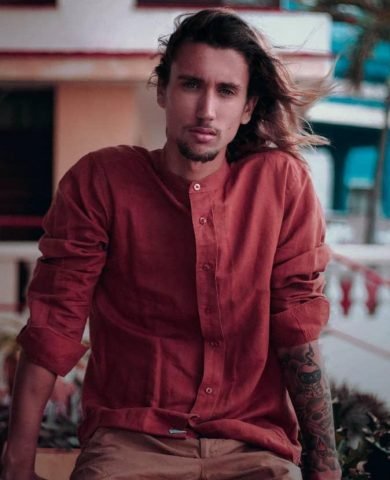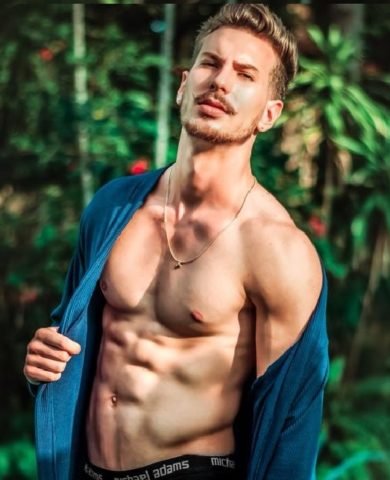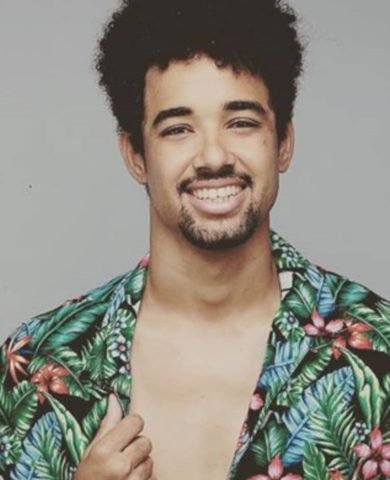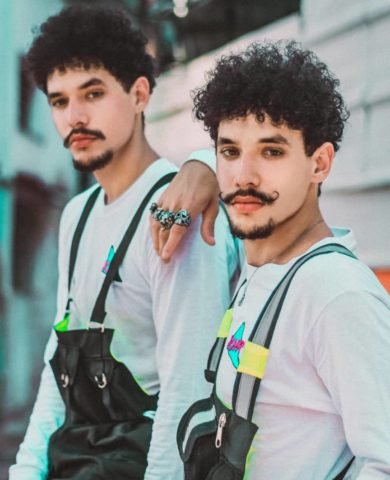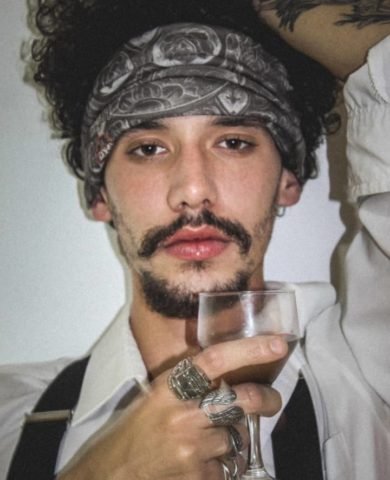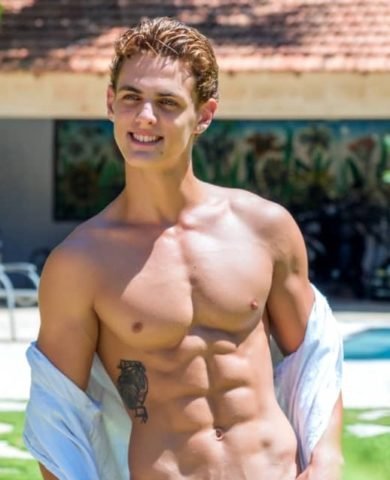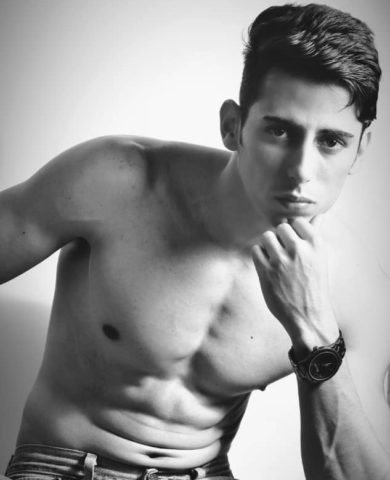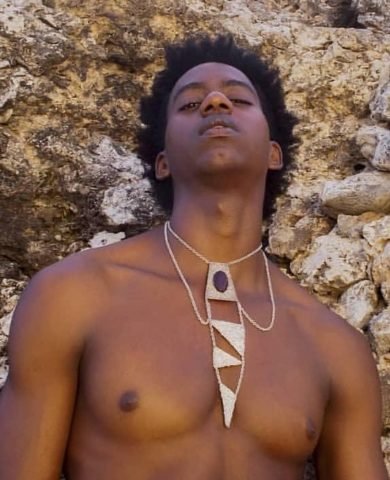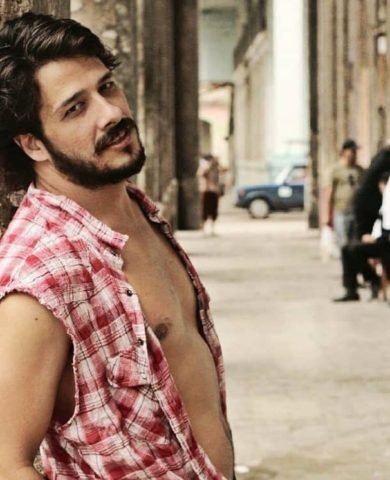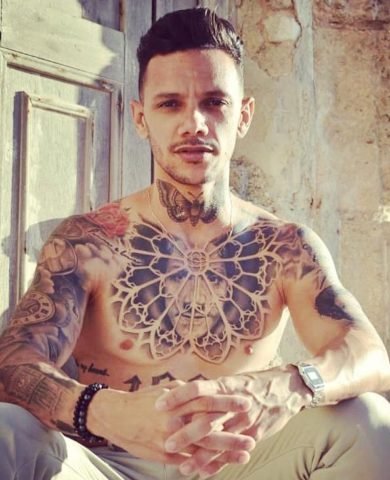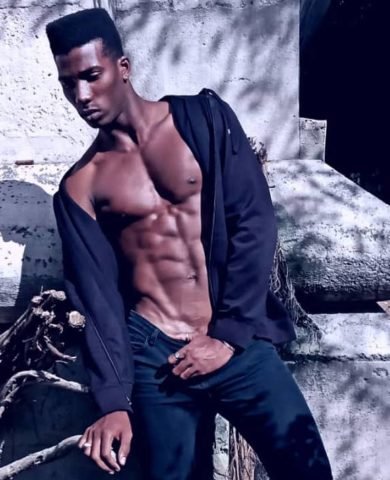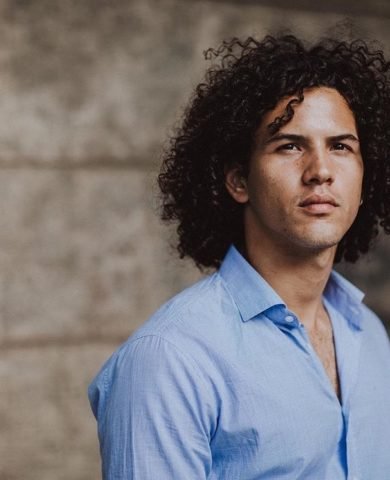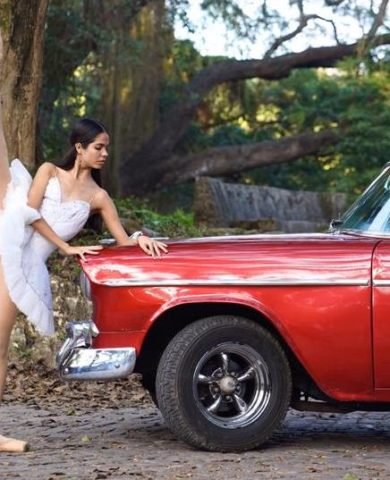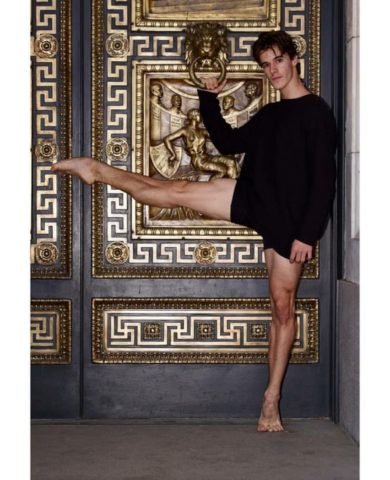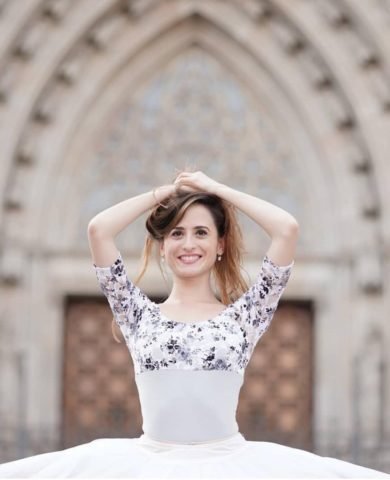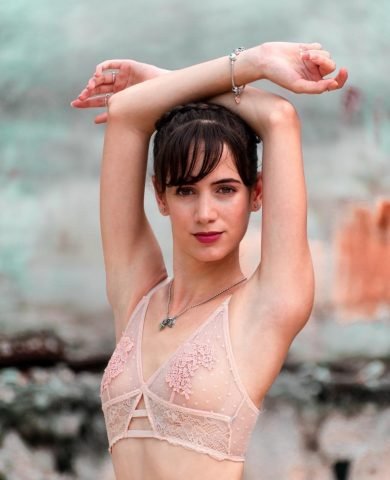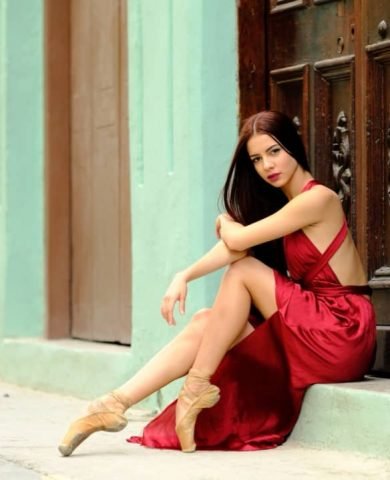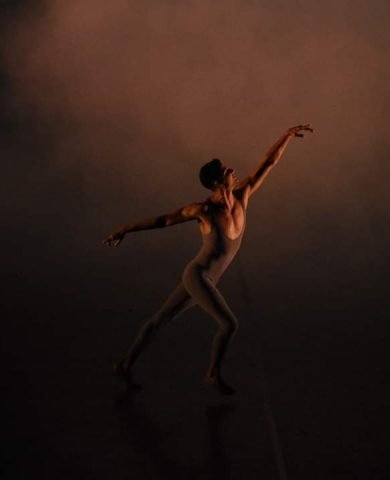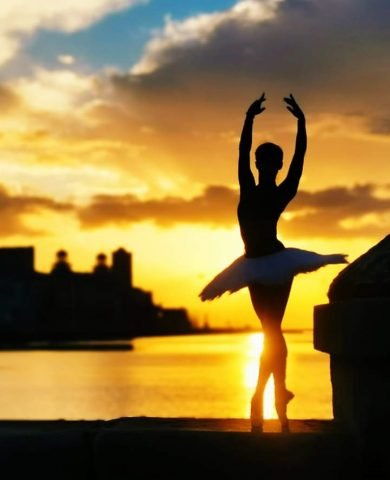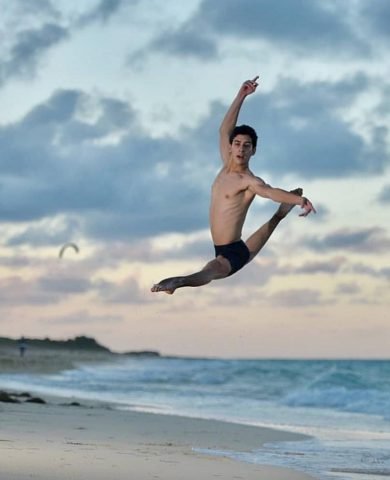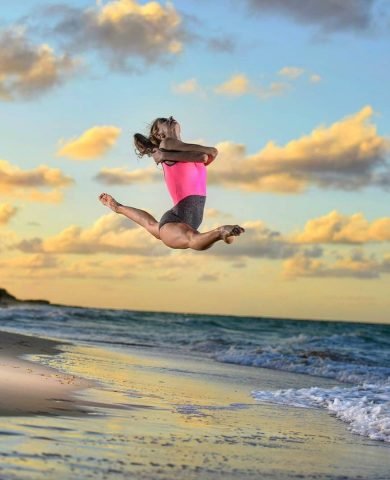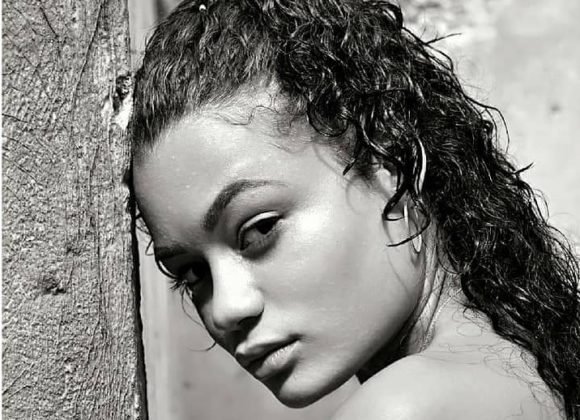Enjoy the best monthly pictures of our women models. Milena Rivalta Karen Machado Jennifer Páez Malena Pérez Legna Bullaín
Our Models
Dancers
Our Services
Fashion Tours

At CubaEmotions we are specialists in guided tours with a focus on fashion and style. Best designers, shops, jewelries, art galleries… all in your hand.
Catwalk Shows

We take care of the total advice of your event: location, catwalk design, backing, scenography, lighting amplification, disc jockey, make-up artists and stylists.
Commercial Photo Shots

CubaEmotions create images to be used by businesses for selling or promoting their brand. Our commercial photographer has the goal of positioning the brand in the minds of the viewers through a single, or series of photographs
Professional Models

CubaEmotions has “models, actors, drivers and influencers” focused on highlighting through their printed image the most significant aspects of the brand, achieving the desire to acquire your product or service.
Corporate Events

We offer this new service of promoters and hosts for solutions of: Trade marketing, special events, corporate, support in fairs, summer team, etc.
Exhibitions / Trade Shows

CubaEmotions embraces the trend of real beauty and has a diversity of bodies and sizes in its stock of models to meet the needs of our customers today. We offer high profile models for fashion shows, making the brand a unique and avant-garde event.
Magazine
Contact Us
Havana, Cuba

Vedado, 10036,
Havana
Tel. (+34) 659 70 54 40
hola@cubaemotions.com
Fashion in Cuba
Let’s start from what fashion is conceptualized in the following way, it is the trend or one of the trends, in terms of what is clothing, accessories and / or styles in terms of life itself and especially the ways to behave individually or collectively.
In modern times or current times as you want to call it, we are imposed beauty patterns that make us pure stereotypes, without caring or taking into account important aspects such as extreme diets or any other type of disorder.
This condemns us as a society to reach extreme measures with the use of a surgery to improve our appearance, or to reach the other extreme of abusing tools such as Photoshop which is a widely used function nowadays.
As for fashion, we can say that it is present in all countries of the world, but now we are focused on a specific point and we will try to make everything clear.
Countries like Cuba cannot be exempt from this phenomenon since Cubans have also been fascinated by everything that encompasses fashion as a concept, in terms of the way Cubans and foreign tourists think.
Cuban fashion in the provinces
It is for this same reason that in the province of Cienfuegos, the so-called fashion week was held last year as a theme, this event was a tribute to all that is its artistic tradition and especially to the culture of the province itself.
So it was very noticeable the presence of many artistic expressions as far as the costumes are concerned, so the bright colors were the great protagonists of the event, taking advantage of the international character of the parade what made it of the knowledge of many other places interested in the theme of fashion, especially the fashion of clothes, with what the island achieved a very significant advance, as far as fashion trends are concerned, so we have the Cubans saying present in the world of fashion.
We are very clear about universal concepts such as that fashion is cyclical, in this we are in total agreement since fashion is not something that has a tendency to disappear or die from one day to another, so the clothes we wear today, tomorrow other people will wear them.
There is no doubt about that, but taking into account the new trends in Cuba and above all the new modern models, what happens is that the cultural factor ends up being lost, since people prefer to adopt foreign patterns and not their own, those of their society as such, which gives way to the foreign trend or foreign fashion as it is called in some places, but this happens fortunately only in places or in segments of the nation as in the case of Cienfuegos which is only a segment of Cuban society
As far as the capital of the island, Havana, is concerned, the history is a little different since here the situation is completely different, since one breathes other airs as far as fashion is concerned, since here one can appreciate the exhibition of the best of the national designers.
Fashion shows in Cuba
It is because of this particular detail that these fashion shows in Havana are considered to be of great international interest, since they are visited or admired by many recognized designers as well as by many people who travel to the island just for that event which is so interesting.
As you can see the island does not escape from what is fashion in the world, this in spite of the many difficulties that as a people they are facing but they have demonstrated that they are a people that do not stop in the face of adversity.
The air of the island, which is like time stands still every day, is a factor that has given very good results in terms of what the outdoor walkways are, especially in the current context of the pandemic that we as a world are facing.
Since the streets of Havana manage to provide that detail so sought after by the organizers of this type of event, which are those that help greatly to provide an atmosphere with a magical touch, with a touch that involves a lot of feelings.
Fashion shows in Cuba
This is why the Cuban streets became a catwalk of an exquisite never seen before in terms of fashion shows, so Havana dressed up in fashion, dressed up in charm and above all dressed up in modern elegance.
Here what dazzled in its entirety was the modern print with very fine details, with very striking colors that shone by the beautiful models gave us a mixture of beauty, elegance and above all fashion.
Backed by a natural environment of such beauty as the very center of Havana, they managed to create a magical atmosphere, an almost sub real environment where everything was combined in a single feeling of fashion and unique beauty.
The fashion boom in Cuba today is such that today there are many Cuban models who are among the most sought after in every fashion show worldwide, for their elegance, grace and above all for their charisma.
They have managed to become the new faces of the industry of everything related to modeling, we can say that they are the new owners of the most famous and important catwalks in the world of modeling, which puts Cuba in the limelight of fashion worldwide, and all thanks to the beauty and elegance of their models so Cuba is living one of its best moments in the world of fashion is what is beginning to become a new and fresh proposal.
Cuban Models
That’s why we consider it very important that you know about each and every one of the Cuban models that are taking over the catwalks of the fashion world, since they are among the most requested in every show that takes place in any country.
So we can start this interesting and important list with 2 sisters that are among the most requested, they are the new owners of the catwalks, they are the new image of many brands, they are the new generation of models that say present in the fashion world.
I am referring to the sisters Malena and Milena, this beautiful duo and owner of much elegance came to us from Villa clara to the most important catwalks in the world within the demanding and often hostile world of fashion.
These sought-after Cuban models have largely succeeded in stirring up and keeping Cuban fashion on the crest of the wave, regardless of the stipulated canons of beauty in this demanding world, which is why they have amply demonstrated why they are considered the leaders of the new generation of models on the island, those who, despite their youth, do not shy away from challenges, however strong they may be, since according to them they were born to model, which is what they most enjoy in life.
Cuban Models Women
We also have the presence of the Cuban model called Laura Roque, who is considered by many experts as a versatile model since she shines with her own light both in the parades of the most important catwalks in the world and in the advertising or commercial stage of the most important companies that exist in the world of advertising and marketing, and not everything is beauty and elegance for this model since she is a graduate in music with the specialty of clarinet.
This shows that the models, besides being elegantly beautiful are also intelligent, another important fact to know is that this beautiful model started in this fashion world from the age of 18 and is still one of the youngest models today.
It is for something that this model has worked for many renowned and prestigious houses around the world, as well as the best brands that exist today, which shows that his talent is very well quoted.
Now we have to tell you a little bit about the Cuban model, Anys Díaz, above all for one particular detail, and that is that the eyes of the world of the catwalks are on this Cuban beauty, and that is if we take into account that she has little baggage in terms of the catwalks, as well as commercials and video clips that make up the fashion industry in the world, she is one of the models who has the most work on the catwalks in the whole world, so in spite of the fact that she is a novice, she is one of the most sought after.
Likewise we have the talent and beauty of the Cuban model called Yessica Borroto, a cinnamon skin model that matches her elegance and above all grace when it comes to wearing the most spectacular models that become a trend in terms of fashion, but beyond its striking genetics this model that by the way is very well valued, is also very popular because it has participated in many programs or fashion realitys that are among the most viewed around the globe.
And finally we would like you to meet the spectacular model called Carolina who besides being a very well quoted model is also a licensed dancer specializing in folk dance which has been an extra ingredient that this Caribbean beauty gives us as a sign that beauty and elegance are their best attributes are their letter of introduction in the world of the catwalks so it is not pure coincidence that it is one of the models most requested today.
But not everything is concentrated in these beautiful and quoted models since the island offers a range of factors or agents that are those that are also being the engine that drives the fashion of the beloved Cuba, that is why there are fashion stores
Like the one known under the name of clandestine, which is not only a store but a promoter of very important fashion events that manages to attract many visitors to the island in each and every one of its events.
That by the way every day are taking more importance and above all more value within the world of fashion, so the island is taking over one of the top places within the world of the catwalks and especially of fashion globally.
This particular store goes beyond just the clothing that becomes a trend because it has known how to take advantage of the most important tools such as social networks, so they have managed to get the most out of it by interacting with their consumers in a direct way a strategy that has given them immediate results.
They give their consumers the opportunity to express in a tangible way their feelings as customers, and above all as the best judges of each and every one of their fashion products, such as shirts with emblematic messages, as well as the dress of the average Cuban, which is a novelty within the island.
And beyond its limits, so that store has become an icon of fashion within Cuba and is taking on a very important edge within the increasingly demanding world of catwalks and trends worldwide.
They have known how to conquer the taste of Cubans inside and outside the island and other latitudes with simple images but that have to do with the current moment of the island have known how to exploit all the popular images within the art of Cuba.
Since they have made use of familiar faces both in music and in all areas of Cuban art, no matter what discipline it is, that’s why you won’t see faces like Madonna or Mercury de Queen in their prints.
Rather, they have dedicated themselves to the task of making known the faces of Cuban artists, which has turned out to be one of the best trend strategies that mark a style that is very typical of Cubans, and which has known how to fit in very well outside of their lands because they are a trend. It has been so much the terrain that it has traveled or advanced clandestinely that it is considered the first brand that has the privilege of appearing in an issue of Vogue magazine, with which you can get an idea of the importance and above all of the trend that this brand manages to leave us in each and every one of its creations.
Although the fashion in Cuba seems to have no end and neither who stops it, it is so much so that it has managed to cross borders until arriving at distant lands as it is the case of its appearance in Hong Kong, since the magazine of world-wide cut Marie Clarie I dedicate a complete editorial to him to its collection colors of Havana, of where it appears of the hand of marks of as much prestige as for example we can mention to you Emile Pucci, Dior or the same Prada with which it finished consecrating like a fashion tendency.
But they are also present in everything that involves the fashion as such since the models wear shoes, bags, and even glasses of very important brands worldwide is why the eyes of the world turned to the island.
Cuban modeling trend
The Cuban trend is so compelling that even Karl Lagergeld had to go to the island, attracted by all the potential that the island was marking in terms of the fashion industry because it was something he had to witness.
Everything took a new direction after the death of the powerful and important designer was made known, since the Kaiser was on the island for 5 days during which he marveled at Cuban fashion and the trend that his garments were bringing to the whole world.
So he felt it was something he didn’t have to see before he died and fulfilled his wish to be present in one of the biggest Cuban fashion shows of haute couture which, with his assistance, had a greater impact.
Another aspect that Cuba gives to the world, besides the Cuban fashion with its styles and colors, is the contribution it has made through photography, since the streets and the city itself become the most attractive catwalks in the fashion world, since Cuba has that detail that cannot be found anywhere else, such as its colonial structure and especially its streets that make a sharp contrast with the modern world and its buildings that seem to have been taken from a movie from the 1920s in the midst of the present.
So it is not out of context that the streets of the island become the catwalk of a very important parade especially in these times because the beauty and atmosphere are unique in the history of fashion.
As it happened during the spring of 2016, which was such an important event for haute couture that it was organized by none other than the same chanel coconut, which shows the importance of Cuban fashion in modern or current times.
So talking about Cuban fashion is not only talking about clothes with a tendency to become fashion, but it is a concept that carries more characters of great importance because it combines many aspects that give more character and nuance to their proposals, and that manage to involve or include factors such as photography, the atmosphere itself that even simple, does not cease to be magical and above all very attractive without forgetting their models that are among the most quoted within the catwalks of the world.
So with each and every one of his proposals that are not at all simple but if they are of an infinite texture and above all colors that make a mixture of beauty and elegance that rarely manages to focus in the same way that Cuban designers have managed to do so.
Cuban fashion today
Therefore we can conclude, taking into account the trend of the Cuban proposal with its spectacular models and above all, its new fresh and very modern designs that are managed to adapt in a great way to the world of fashion.
So today Cuba is a fashion industry that every day is taking a better place within the trends and also within what is the modeling of those trends, in fact Cuba has managed to position itself from a prominent place within the world of modeling and fashion as a young and full of energy proposal that resists to go unnoticed and has achieved largely thanks to its culture, its traditions, the charisma of its people, the efforts of fashion agents who are focusing on working on the island and of course we can’t fail to mention all the Cuban models who show off at every event.
So to talk about Cuban fashion is to talk about quality and above all beauty in texture but also in color and the desire to move forward.
Cuban fashion and models in Cuba
Cuban Fashion (from the French mode and the Latin modus ‘mode, measure’)1 is a set of garments, ornaments and accessories based on tastes, uses and customs that are used by a majority during a certain period of time and that will set the trend according to the duration of it; although cuban fashion also refers to something that is repeated many times, in this case, clothes.
General considerations about cuban models
Reviews The intention of certain individuals to separate themselves from the dominant fashion trends generally creates a new trend because of its differentiating character. (Simmel).
The propagation of a trend in cuban fashion necessarily leads to its failure. Any widely accepted fashion loses its attraction as it ceases to be a differentiating element.
Vertical Transmission Theories
Thorstein Veblen and Bourdieu In his work The Idle Class Theory, Veblen relates how cuban fashion is a tool that the upper class uses to differentiate itself from the rest of the classes, fundamentally from the lower classes. The beauty and symbolism of leisure; related to the wealthy being, the sobriety and efficiency of the garments of the lower and industrial classes, are confronted. Bourdieu calls this distinctive practices: the manifestation of the class struggle, in this case symbolic, whose objective is to perpetuate the inequality between them.
The vertical diffusion of tastes is the mechanism by which, Veblen argues, cuban fashion is transmitted from one class to another, since every class imitates the one immediately above it. Members of a given class can identify with each other by being on the same level and differentiate themselves from others by having a barrier that separates them.
The differentiated taste of each class is not inherent to its members. According to Bourdieu, it is the consequence of the socialization of individuals within the different classes, that is, their family, their school, their childhood friends, etc. This taste is learned from the context and is internalized. The term nouveau riche has a derogatory connotation, since it designates someone who, although he has just arrived, in economic terms, at a new class, he has not done so in symbolic terms; since he does not dress or behave in the same way, not because he does not have the will to do so, but because he has socialized as someone who is poor, with mental schemes that allow him to process the reality that surrounds him for that particular class and not for another.2
Horizontal transmission theories Simmel sees cuban fashion as simply a tool that individuals use to free themselves from the anguish of choice by being able to consider themselves members of a group with ease. Individuality demands a series of responsibilities that are diluted in the group and forces the subjects to defend themselves by their own forces (from symbolic attacks, it is understood). In this case, fashion would be a mechanism that responds to a social need and, therefore, an ultimate purpose cannot be sought for it.
The greater the difficulty of individuals to differentiate themselves, the more feverish is the symbolic combat of distinction-imitation that takes place between different classes, demanding this, in turn, more changes that happen at a greater speed to satisfy this demand. And here, the productive system responds with greater obsolescence.3
Keynes and the beauty contest Keynes devised the metaphor of the beauty contest to explain the functioning of the stock markets, but it also serves to explain the functioning of cuban fashion from the perspective of horizontal transmission.
Let’s imagine a contest in which we have to choose among six faces the one we think will be the most voted. If we are perceptive, we will realise that we should not choose according to our particular taste, nor according to the majority taste. Assuming that the other contestants are as perceptive as we are, we should choose the face based on what we think others will think. It’s a game of thinking that thinks I think endlessly. The problem it poses is that it is impossible to guess the result with certainty.3 Will the others choose according to their individual taste? The average of the particular tastes? Or will they choose by thinking about the strategies of other participants? In short, everyone, even if they don’t know it, participates in a beauty contest.
History of cuban fashion in the clothing industry
16th century In the Italian Renaissance, it was customary for men to wear a short cape without a hood, a cap, a hat with feathers and wide, blunt-toed shoes. Women, on the other hand, wore bullocks and slashes on their sleeves, and a curly ruff; as well as skirts and overskirts, doublets and bodices, capes or stringy cloaks and a head cap.
From the second half of the century, the growing importance of the Spanish monarchy imposed in Europe the style of the court of Emperor Charles I of Spain, a style of great sobriety, characterized by the use of dark colors and tight clothing, without wrinkles or folds and rigid appearance, especially in women, which imposes the use of the hangman. On the upper edge of the shirt was placed a cord that will give rise to the gorguera or lechuguilla.
17th Century During this period, French fashion dominates, both in men and women. The short panties were used with silk stockings, a lollipop and a jacket which, by the middle of the century, became smaller and with lateral folds backwards and narrow sleeves.
With the fall of the French dynasty, the costume became simple and people wore underpants that were adjusted to half a leg, a vest, a tie and a jacket, skirts with a high neck and flight, powdered wigs finished off with a bow, and even hats with three or two peaks.
After the revolution, the hair is left long and straight, they wear conical or tubular top hats with short brims and later shoes with coloured heels to which they add ribbons or buckles and high boots with laces. The woman wears wide, flattened painers or greenies on both fronts, a corset bra and a neckline with gauze or lace, polonaise, lace collared gowns and long sleeves. The French suit consists of a pointed bodice, dented sleeves, straight and open skirts, which are draped with stowaways and a long tail, a folded neck and elbow-length sleeves with squirts. Along with the revolution, the flight of the skirt disappears and the classic dresses are imitated: high waist, short jacket with long sleeves, skirt with pleats, big necklines, shawls and long gloves. As for the hairstyle, this is backwards with curls that are later made taller and more voluminous with ringlets, loops and feathers, bonnets and wide brimmed hats. The type of footwear is usually high-heeled shoes with a narrow toe, although later they began to wear the low ones.
18th Century In the 18th century, French jackets and chupas, i.e. lower class and somewhat narrow jackets, jackets, knee-length underwear, ties instead of goatees, wigs and big hats were popular among men. Meanwhile, the style of women’s clothing continues to be the same as in the last century, and the use of head coverings has been adopted. They also wore long dresses, big hats and above all in high society, women were characterized by wearing a corset, which was a way of showing their height. They also wore rings, and sometimes long gloves or necklaces, among others.
19th Century During this century the tailcoat, the levite and the trousers for the gentlemen, and the silk shawl and the combs for the ladies in Spain were their own.
After the Napoleonic period, from 18004 to 1820, when the female silhouette was slim and always high, tightly fitting under the chest, leaving the rest of the garment to fall straight on the body; There was a drastic change in Romanticism, giving way to the corset, which gave the waist the shape of an hourglass, and the crinoline, which hollowed out the wide skirts and reached its peak in 1860, causing the ladies to be unable to walk on the arm of their husband or fiancé. In 1870, it was replaced by the bustle, which only hollowed out the skirt from behind and which went out of cuban fashion in 1890, with the garment then falling to the ground without any frame, although until 1900 the skirts were a little flared.
Between 1820 and 1914, there was a clear distinction in Western women’s clothing between day dresses, always with long sleeves, although they could be up to the elbow in summer, and closed up to the neck; and evening dresses, always with short sleeves and very low-cut.
20th Century
Fashion design and cuban models from 1909
The fashion of the 20th century began in 1900 with the so-called S-silhouette, known in this way because of the corset that pushed the breasts up, narrowed the waist and the skirts fitted to the hips, which widened in the shape of a bell when they reached the floor. In the world of work, tailored suits and cuts with a male influence began to be introduced for women. The dresses remained long, even covering the shoes. Feathers and lace were in vogue; large hats stood out, with an infinity of adornments and ornaments. This fashion was mostly followed by the upper and middle classes. In 1908, the silhouette became much straighter, without marking the waist so much, and a wave of orientalism was produced thanks to the designs of Paul Poiret and the Russian ballets.
The 1910s There are two periods in this decade. The first, from 1905 until the beginning of the First World War, is characterized by the appendix of the fashionable style of the Belle Époque, as well as by the appearance of a silhouette that tends towards verticality in women and orientalism. Straight, long corsets and low-flying skirts accompanied by an overskirt became fashionable, and daytime skirts were shortened to the ankles, leaving shoes visible. The second, throughout the conflict, is characterized by the emergence of fashions much more comfortable for women: the skirts continue to shorten to almost half a calf and the bodies follow the natural line of the body, without a corset. This was due to the need for women to make up for the lack of manpower in the jobs previously held by men. Because of this comfort in clothing, the androgynous fashion of the 1920s was born later.
1920s
In the 1920s, clothing began to have a much more practical purpose. The silhouette changed again, dropping the waistline down to the hips. The jacket suit became popular as street wear, and for parties, dresses with large necklines on the back were chosen as well as long fur coats. Short skirts up to the knee and sober and closed hats -cloché- stand out, in addition, women leave their hair short for the first time.
During this decade, the ladies changed their white look for the natural appearance of pink facial powder, created by Polish cosmetologist Helena Rubinstein. The 1920s were one of the most revolutionary periods of the 20th century in this regard, as women adopted the custom of putting on makeup, keeping powder and lipstick in their bags for touch-ups. Until then, the only ones who wore makeup were artists and prostitutes. Young women took their clothes off and started drinking and smoking in public as a way of provoking the rigid status that prevailed at the beginning of the century.
The girls who were more fashionable painted their lips in red, wore short hair and eyes painted with dark shadows, and used to dance jazz until dawn. This was probably the most daring and transgressive decade. It was a time of change that affected all cultural aspects and had a strong impact on cuban fashion.
1930s The optimism ended with the stock market crash in October 1929, which caused a serious global economic crisis during the following years. In 1930, the waistline returned to its natural place and the skirts lengthened to below the knee. Femininity returned, garments, hats and hair abandoned the garçon style for slightly longer, wavy hairstyles. From 1935 onwards, the shoulders are usually marked, giving the silhouette an inverted triangle look.
From 1940 to 1945 During the Second World War, fashion was defined as austere and simple: the look was militarized and the fabrics became poor due to the lack of materials. As a result, women wore city uniforms, i.e. suits in jackets. The length of the skirts continued below the knees, but the shortage of materials was so great that laws were imposed to regulate this length. Because of the cost, not all women could buy stockings. Pantyhose became popular, cork topolino shoes and simple hats or simply head scarves were used.5
The 1945 and 1950s The early post-war years brought women back to the home, to the chores of the house and to thinking about themselves again. After years of anguish, worries and much work, the woman was able to live in the tranquility of her home, indulge in small pleasures and be flirtatious. The world was leaving a stage behind and so was cuban fashion. From then on, the woman returned to worrying about her beauty, her aesthetics and her clothes. That is why the fashion of the 50’s stands out for its return to splendour.
In 1947, following the triumph of Christian Dior’s new look, the hourglass silhouette became popular: a narrow waist with voluminous curves. To exaggerate this silhouette, cone-shaped bras and tight corsets were used. The flight of the skirts, which continued to be below the knees, was increased. The woman wanted frivolity and craved feminine clothing that did not look like a civilian version of military uniforms. She wanted to be sensual again, but without being too provocative; the curves thus became the new symbol of feminine beauty. She always had to be correctly made up, and the use of accessories such as stiletto shoes, gloves, headdresses, pamelas, elbow bags, etc. began to be highly valued. The most used fabrics were different types of silk and tulle. The main objective was to give more volume to the woman’s hips and to achieve a wasp waist.
The most notable designers of this period were Christian Dior, Coco Chanel, Cristóbal Balenciaga, Elsa Chiaparelli, Hubert de Givenchy, Jacques Fath, Nina Ricci and Pierre Cardin.67
1960s This decade is marked by revolution. Comfortable and youthful clothing was used again, following the natural line of the body and leaving behind bourgeois luxury. The usual use of hats and gloves is abandoned. From 1966, extravagant clothing became fashionable, with butterfly, flower, pop-art or ethnic prints. The silhouettes became smoother again and the revolutionary short skirts, which were born in London in 1965 by the designer Mary Quant, quickly became established among young women all over the world.
The 1970s In 1970, adolescents had the ability to express themselves freely. This is how the concept of different, original, fun and extravagant clothing came about. Hair was worn short, long or with geometric cuts. Both men and women started wearing bell-bottoms and cotton blouses, among others.
It was a very diverse decade, in which there was a rage towards the retro. Flowers were one of the main symbols, not only on clothes but also in hair, and represented the illusory ideology that led them to the so-called flower revolution. The costumes and dresses stood out and were worn with tight pants. Cotton was replaced by lycra, and they wore boots or high-heeled shoes, of the Swedish type.
1980s Fashion brought about considerable changes during these years. The new style was characterized by the use of visible underwear, either on a T-shirt, under a translucent T-shirt or visible lace straps. This new cuban fashion was highly controversial, becoming a synonym of liberation for women, since in the past wearing underwear in this way gave them the appearance of being a disheveled woman. Thanks to this trend, women can now wear comfortable T-shirts without having to worry about transparencies or bra straps.
1990s This period was based on variety and not on a specific and lasting trend. There was a preference to dress in whatever made them feel most comfortable, without giving much importance to the opinion of others or to trends, because it had been concluded that there was no real freedom. Band T-shirts became popular, as did loose hair. One of the great innovations of this period was the appearance of pyrsines, tattoos and hair dyes.
20th century
Cuban Fashion show at the Instituto Tecnológico y de Estudios Superiores de Monterrey, Campus Ciudad de México At the end of the 20th century and the beginning of the 21st century, the possibility of ordering and sending clothes to any part of the world was born thanks to the media or the Internet. Consequently, current fashion seems to be heading towards universal uniformity.
Decade of 2000 Throughout the 2000’s, the concept of urban tribes took hold. They directly influenced modes of dress, mainly through increased exposure to mass media such as the Internet. Although subcultures have existed since the 1960s and 1970s, such as Beatnik and Hippies, some do not adopt the counter-cultural feeling that gave rise to them, being identifiable only by their way of dressing, for example, emo culture. Both men and women adopt the tracksuit for almost every occasion. Women wear shorts, skirts, mini-skirts and high-waisted trousers, and some garments from the 1980s have been reintroduced, with the return of the flowery print. As for footwear, women wear sturdy boots, clogs or sandals.
Decade of 2010 Men wear a v-neck with skinny jeans and branded shoes in their wardrobe. Light pants, but on the other hand, dark pants provide great elegance, as well as open shirts with T-shirts underneath and rolled up. Women prefer fresh fashion but with a modern touch, little make-up and natural hair with structured hairstyles, incorporating details from the 1960s fashion. Vintage has a strong presence in the female wardrobe. On the other hand, in men’s clothing, an alternative cuban fashion is starting to grow, looking for identity, influenced by the trends and tastes of their own, giving rise to a style that is a little more risky and fun.
The impact of the media in models in cuba
The mass consumer society began to play a central role at the time when fashion began to be understood as the need to make a distinction between each individual, which Pierre Bourdieu and Jean Baudrillard talked about.8 Fashion is part of our context as people, it influences different aspects of our lives, from what we eat and drink to the places we should go. Today, the simple act of dressing brings with it factors as diverse as self-esteem, security, aesthetic experience, consumer and imitation practices, and the desire for inclusion.9 It should never be forgotten that all fashions are dangerous from the moment they become extreme.
The mass media are and have been an important tool in the field of information and its dissemination,10 as they can reach any part of the world in a very short time due to the process of globalization. They are creators of a new culture and global reorganization of the market, generating millions of dollars in income worldwide and having such an influence on contemporary society that few can match the power they have been given. Cuban Fashion is strongly linked to these media and is controlled by them, as they contribute to the processes of socialization.
We live in the age of communication: the media make us accomplices of information of all kinds and are in charge of teaching us how to model the perceptions we have of reality. These media bombard the entire population, although they mainly target teenagers and young adults, with series, TV ads, programs, reality shows, social networks such as Instagram and Facebook, magazines or music, among others. All this leads to a new multicultural individualism. The impact of social networks and technology among young people, based on the sociological concepts of group and primary relationships, generates a need for identity among young people.
The cuban influencers of brands
Cuban Fashion and dress have a complex relationship with identity: the clothes we choose to wear can be a way of expressing who we are, of giving details about our gender, class or position, for example.12
The new generation of consumers do not passively receive the stories of the brands that companies tell, but are co-creators of their meaning. For marketers, this means that the old trick of shouting out how great the brand is or how to use it no longer works. Today it is crucial to listen to young consumers and understand how they fit brands into their lifestyles.
In their Talk Track surveys of more than 2,000 U.S. teenagers ages 13-17, the Keller Fay group found that young people have an average of 145 brand conversations per week.
Of course, each country or region has its own preferred local brands. Topshop dominates the industry in the UK, Zara is successful in Spain and G-Star in the Netherlands; but overall, it is H&M that achieves the most success internationally in the Generation Y boys market.13
Color as an important part It is known that there is a strong compatibility between emotions, cuban fashion consumption and colour, whatever the cultural roots or the different types of population analysed; in other words, colour shows correspondence in terms of its meaning and is associated with emotions. Furthermore, from the analysis of the surveys carried out in a single region, a strong tendency to obey color preferences is demonstrated both in the decision making process for entering consumer establishments and in the event of the purchase itself; with conclusive and definitive results for the most part, which allows us to infer that consumption is affected by color and that the consumer can be influenced to such an extent that he or she desists from consuming an object because they cannot find their favorite shade.
The link between colour and cuban fashion consumption is not consistent and generates conflicts regarding the meanings of colour, but it is concluded that as a result of the effects of colour on the emotions of individuals, the object must contemplate the trends and colour ranges of colour from the perspective of design in order to cover the greatest number of individuals possible.
Identity search
Cuban Fashion and brands not only embrace the desire to imitate other people or a particular community, but to express individuality; that is, while clothing indicates our affiliation with particular communities and expresses shared values, ideas and lifestyles, we do not want to be “clones” dressed identically to the members of that community. The clothing we choose to wear represents a compromise between the demands of the social world, the environment to which we belong and our individual desires.
A successful fashion captures the “mood” or “taste” that is emerging. Cuban Fashion, as both discourse and practice, embodies the body, making it social and identifiable, and explains how this construction of the body through clothing is of considerable importance to the development of modern society.12
Throughout history, different cultures, cities and social groups have used clothing belonging to fashion as a support to make public manifestation of their particular symbolic universe, that is, their ideologies, creeds, emotional culture, traditions, etc.; as well as a communicative element to inform about the group that creates it. “Individuals, too, taken in terms of personal identity, perceive that “clothing speaks” and fulfills a socializing function in that what we wear contributes to the process of creating our image, understood in terms not of what we really are, but of how others perceive us.
Thus, cuban fashion has become the cultural expression of tastes, lifestyles or personal identity, in other words, a metaculture capable of expanding with the help of social media, which through advertising and marketing, segment the market and address the masses in a personalized way; exploiting the role of acquisition and construction of personality expressed through consumer objects that become an extension of what we are, due to the meaning given to them in the media, whether inherited, traditional or emerging. “Cuban Fashion would serve as an effective counterweight to stimulate the personal entity and with it our condition as people” Glover, 2017.
New challenges of cuban fashion
Today, the fashion industry is being questioned for its production process and consumption.
Some fashion brands have been denounced for not offering decent working conditions to their workers.
Many production processes are not environmentally friendly and only take into consideration satisfying changing consumer demand. In this matter there is a great task to be done; it must be considered that the new generations are increasingly fluctuating with their tastes. Social networks provide a lot of information from all corners of the world, which also causes new trends to spread, massify and become obsolete more quickly.
Currently, some brands and cuban fashion lovers have highlighted the value of used clothes and have preferred to modify their own clothes or those of others according to the styles they wear, contributing to the recycling of clothes.
Throughout the history of cuban fashion, a distorted image of beauty, the body and women has spread. Little by little, great fashion brands have emerged that through their campaigns have shown that there is no perfect body shape or size, nor a race, skin color, or weight.
Stay in a luxury accommodation in Cuba and meet out cuban models!


